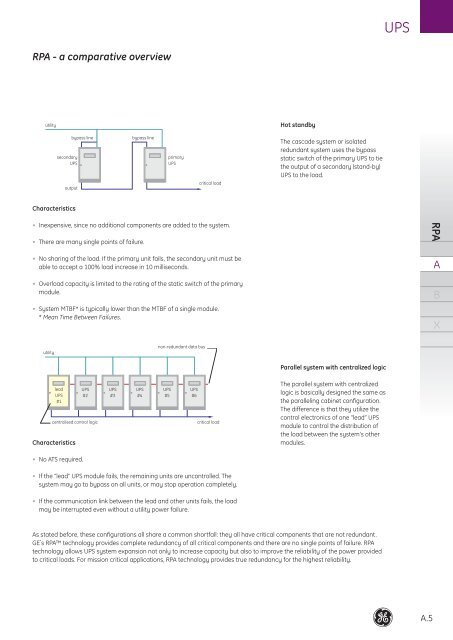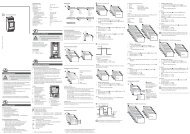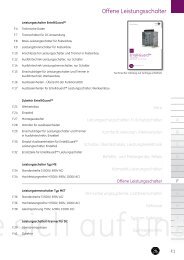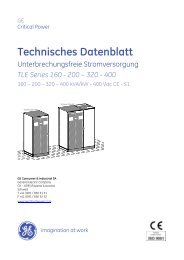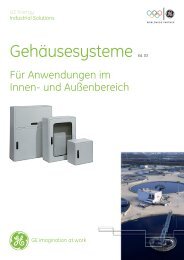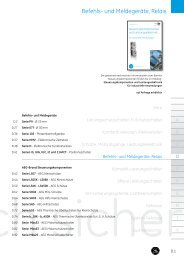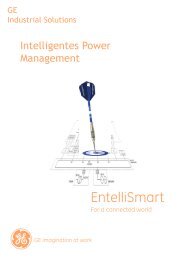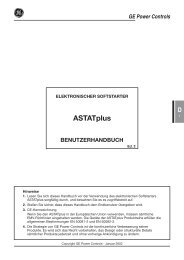Uninterruptible Power Supplies - G E Power Controls
Uninterruptible Power Supplies - G E Power Controls
Uninterruptible Power Supplies - G E Power Controls
Create successful ePaper yourself
Turn your PDF publications into a flip-book with our unique Google optimized e-Paper software.
UPS<br />
RPA - a comparative overview<br />
utility<br />
Hot standby<br />
secondary<br />
UPS<br />
output<br />
bypass line<br />
bypass line<br />
primary<br />
UPS<br />
critical load<br />
The cascade system or isolated<br />
redundant system uses the bypass<br />
static switch of the primary UPS to tie<br />
the output of a secondary (stand-by)<br />
UPS to the load.<br />
Characteristics<br />
• Inexpensive, since no additional components are added to the system.<br />
• There are many single points of failure.<br />
• No sharing of the load. If the primary unit fails, the secondary unit must be<br />
able to accept a 100% load increase in 10 milliseconds.<br />
• Overload capacity is limited to the rating of the static switch of the primary<br />
module.<br />
• System MTBF* is typically lower than the MTBF of a single module.<br />
* Mean Time Between Failures.<br />
RPA<br />
A<br />
B<br />
X<br />
utility<br />
non-redundant data bus<br />
Parallel system with centralized logic<br />
lead<br />
UPS<br />
#1<br />
Characteristics<br />
UPS<br />
#2<br />
centralised control logic<br />
UPS<br />
#3<br />
UPS<br />
#4<br />
UPS<br />
#5<br />
UPS<br />
#6<br />
critical load<br />
The parallel system with centralized<br />
logic is basically designed the same as<br />
the paralleling cabinet configuration.<br />
The difference is that they utilize the<br />
control electronics of one “lead” UPS<br />
module to control the distribution of<br />
the load between the system’s other<br />
modules.<br />
• No ATS required.<br />
• If the “lead” UPS module fails, the remaining units are uncontrolled. The<br />
system may go to bypass on all units, or may stop operation completely.<br />
• If the communication link between the lead and other units fails, the load<br />
may be interrupted even without a utility power failure.<br />
As stated before, these configurations all share a common shortfall: they all have critical components that are not redundant.<br />
GE´s RPA technology provides complete redundancy of all critical components and there are no single points of failure. RPA<br />
technology allows UPS system expansion not only to increase capacity but also to improve the reliability of the power provided<br />
to critical loads. For mission critical applications, RPA technology provides true redundancy for the highest reliability.<br />
A.5


